Embark on a journey through Vietnam scenic – the breathtaking landscapes and cultural treasures. From the majestic limestone formations of Ha Long Bay to the serene rice terraces of Sapa, Vietnam offers an array of scenic marvels waiting to be discovered. Join us as we delve into the natural beauty and cultural richness of this captivating country, where every corner unveils a new adventure and every vista leaves a lasting impression.
Contents
Top 8 Vietnam Scenics that You Shouldn’t Miss!
Mekong Delta
The Mekong Delta is a land of abundance and charm that beckons travelers from far and wide in Vietnam. Here, amidst the largest and most fertile delta in Southeast Asia, you’ll discover a vibrant tapestry of culture, cuisine, and natural beauty waiting to be explored.
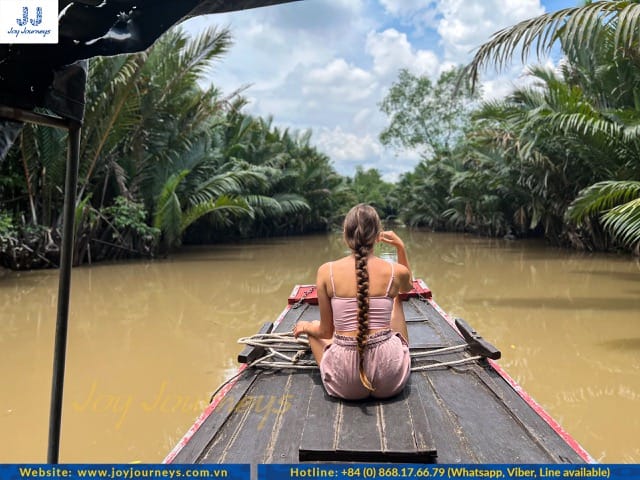
Picture yourself drifting along the tranquil waterways, surrounded by lush green rice fields stretching as far as the eye can see. This is where life thrives, deeply intertwined with the rhythm of the river. Step into the bustling floating markets, where vibrant colors and exotic scents fill the air as locals trade their wares from boat to boat.
But the Mekong Delta is more than just a visual spectacle – it’s a culinary adventure like no other. Indulge your taste buds in a symphony of flavors, where fresh seafood and tropical fruits take center stage. From the tangy delights of Cambodian-inspired dishes to the rich umami of fermented fish sauce, every bite tells a story of tradition and innovation.
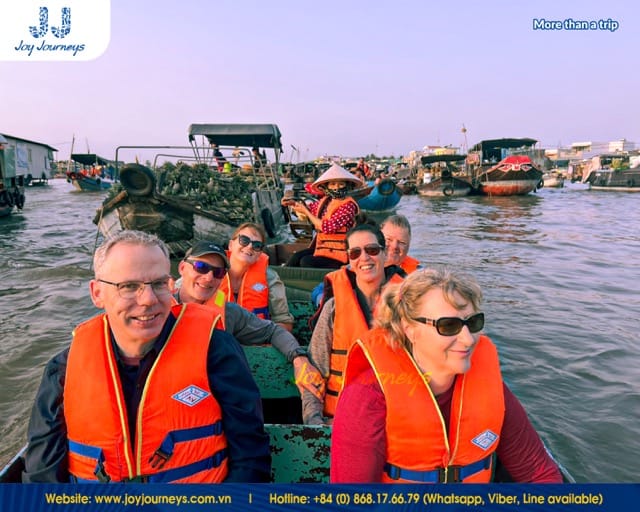
And let’s not forget the warm hospitality of the people here, whose genuine kindness and welcoming smiles will make you feel right at home. Whether you’re exploring bustling towns or quiet countryside retreats, you’ll find a sense of camaraderie and connection that is truly special.
Sapa and the Tonkinese Alps
Sa Pa’s climate is mild and pleasant throughout much of the year, making it an ideal destination for travelers seeking respite from the heat. However, it’s best to avoid visiting during the rainy season from June to early August, as extreme weather conditions can lead to floods, flash floods, and landslides.
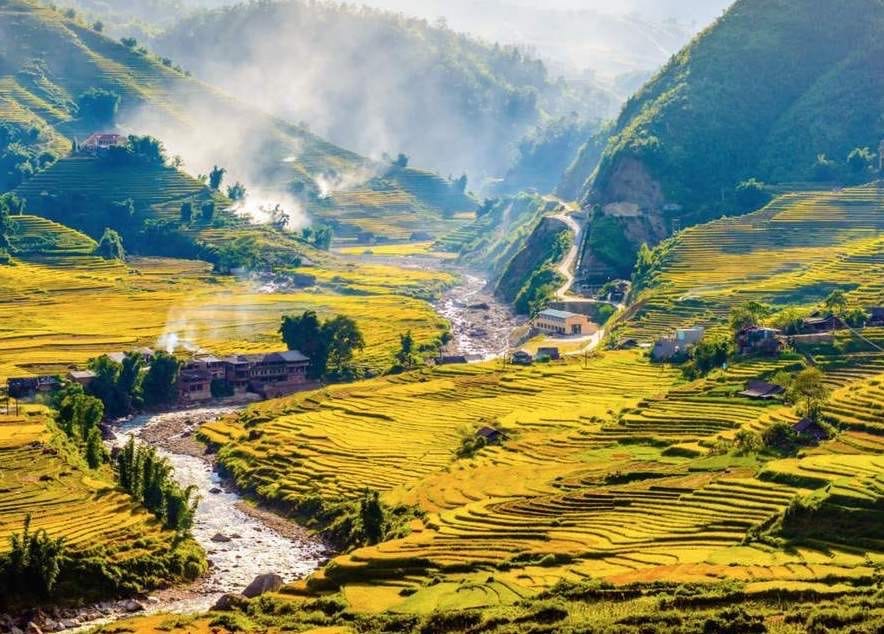
For those who prefer to visit during the spring months, from February to May, Sa Pa comes alive with vibrant blossoms of cherry apricot, peach, and plum trees, painting the landscape in hues of pink and white. Summer, from June to August, offers lush green terraced fields and cool mountain breezes, providing the perfect escape from the sweltering heat of the lowlands.

As fall descends upon Sa Pa from September to November, the landscape transforms into a golden tapestry of ripe rice fields, set against a backdrop of crisp, cool air. Winter, from December to February, brings a chance to witness the rare spectacle of snow and ice on the peaks of the Hoang Lien Son mountain range, which spans the provinces of Lao Cai, Lai Chau, and Yen Bai.
At the foot of the majestic Hoang Lien Son mountains lie picturesque valleys inhabited by ethnic minorities such as the Dao, Tay, and H’Mong. One of the highlights of any visit to Sa Pa is exploring the vibrant town itself, which has become a popular destination for domestic and international travelers alike in recent years.
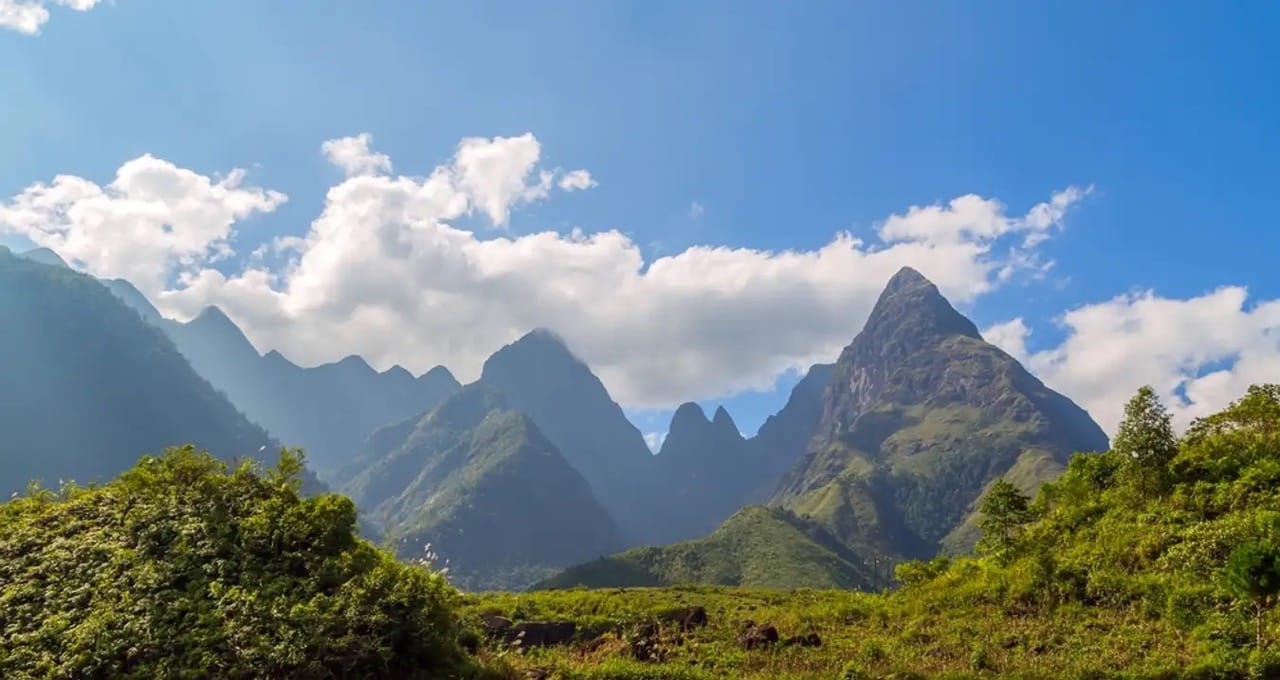
While reaching the summit of Fansipan, the highest peak in Vietnam, is a notable achievement for many, the journey itself offers an unforgettable experience. The “City in the Clouds” on the way to the top of Fansipan provides travelers with a sense of reverence and awe, as they are greeted by the sight of the tallest bronze Buddha statue in Vietnam, standing at an impressive 21.5 meters.
With its stunning natural landscapes, rich cultural heritage, and unique experiences awaiting at every turn, Sa Pa and the Tonkinese Alps are a must-visit destination for travelers seeking adventure, tranquility, and spiritual enlightenment amidst the beauty of northern Vietnam.
Ha Long Bay
Ha Long Bay is renowned for its stunning collection of rocky islands and mesmerizing caves, creating a landscape unlike any other. These islands, categorized into limestone and schist formations, are clustered predominantly in two main regions: the southeast area known as Bai Tu Long Bay, and the southwest area of Ha Long Bay itself. With a geological tectonic age dating back 250 to 280 million years, Ha Long Bay’s formation is a testament to the earth’s ever-evolving landscape, shaped by centuries of lifting, lowering, erosion, and weathering processes.
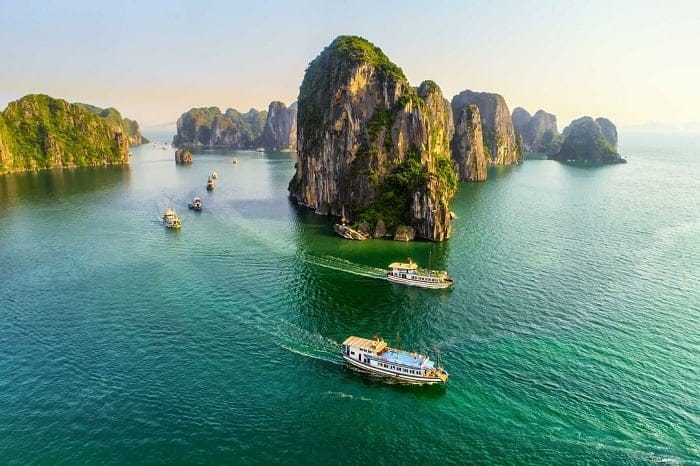
What truly sets Ha Long Bay apart is its awe-inspiring natural scenery. Picture yourself surrounded by hundreds of towering islands, each adorned with lush green vegetation, set against the backdrop of crystal-clear, serene waters. This picturesque vista has captured the hearts of countless visitors and earned Ha Long Bay the prestigious title of a UNESCO World Natural Heritage site, bestowed upon it in both 1994 and 2000.
For travelers seeking an unforgettable experience, Ha Long Bay offers a myriad of opportunities for exploration and adventure. From cruising along the tranquil waters and admiring the karst formations to venturing into mystical caves and hidden grottoes, there’s no shortage of wonders to discover in this enchanting locale.
Ban Gioc Waterfall
Nestled in Dam Thuy commune, Trung Khanh district, Cao Bang province, Ban Gioc Waterfall stands as a breathtaking natural wonder, captivating visitors with its pristine charm and grandeur. Renowned as one of the largest transnational waterfalls globally, Ban Gioc exudes a sense of awe and pride, not only for its majestic beauty but also for its significance to the local community.
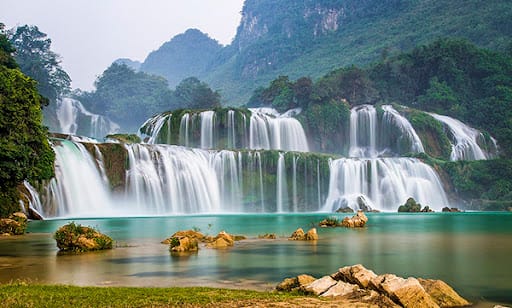
Ban Gioc Waterfall boasts a unique feature – its cascading waters are not a single stream from above but are divided into multiple layers, creating a mesmerizing interplay of white cascades amidst vibrant foliage. Situated along the border between Vietnam and China, the waterfall is divided into distinct sections: the left side, known as the secondary waterfall, and the right side, comprising the main waterfall. While the secondary waterfall and a portion of the main waterfall belong to Vietnamese territory, the remaining part of the main waterfall extends into China.
In Vietnamese folklore, the secondary waterfall is aptly named “High Waterfall,” while the main waterfall is referred to as “Low Waterfall.” However, collectively, this magnificent site is known as Ban Gioc Waterfall. On the Chinese side, the main waterfall is known as Duc Thien Waterfall, while the secondary waterfall is called Ban Uoc Waterfall, forming a harmonious natural spectacle that transcends national boundaries.
Visitors to Ban Gioc are greeted with a symphony of rushing waters, surrounded by lush greenery and towering cliffs, creating a serene oasis amidst the rugged landscape. As one stands in awe of the cascading waters and the sheer scale of the waterfall, it’s hard not to be enchanted by the tranquility and majesty of this natural masterpiece.
Ha Giang Province
As a high mountainous province, Ha Giang boasts a noticeably cooler climate compared to the lowlands and midlands, with average annual temperatures ranging from 21 to 23 degrees Celsius. The region is characterized by high humidity year-round, along with frequent heavy and prolonged rainfall, creating a lush and verdant environment.
One of the remarkable aspects of Ha Giang is its year-round accessibility to travelers. While each season offers its own unique charm, many visitors are drawn to Ha Giang during the fall months, particularly in October, November, and December, when the rice fields turn a golden hue and vibrant buckwheat flowers carpet the landscape. Springtime brings forth a breathtaking display of apricot and plum blossoms, painting the forests in a kaleidoscope of colors reminiscent of a dreamy paradise.
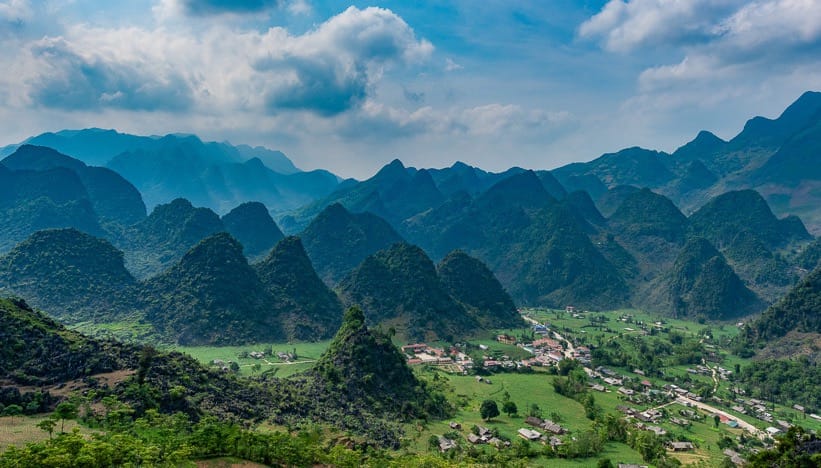
Spanning nearly 8,000 square kilometers, Ha Giang is blessed with a diverse range of natural wonders, including forested mountains, meandering rivers, and captivating ecosystems. Travelers are captivated by the province’s majestic landmarks, such as the awe-inspiring Ma Pi Leng peak, the iconic Quan Ba twin mountains, and the breathtaking Tu San canyon. Additionally, Ha Giang boasts a wealth of historical and cultural treasures, including the ancient town of Dong Van and the UNESCO-listed Dong Van Karst Plateau, home to numerous ethnic villages that preserve unique indigenous cultures.
Hoi An
In 2021, this enchanting town was honored as Asia’s Leading Cultural City Destination at the prestigious World Travel Awards, solidifying its status as a must-visit destination for travelers from around the globe.
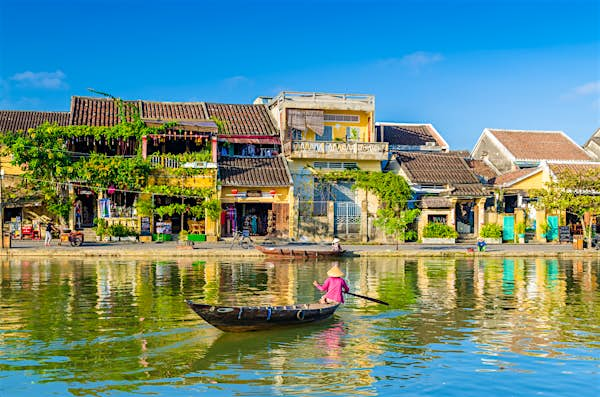
Hoi An‘s illustrious history dates back centuries, with archaeological evidence suggesting a thriving trade hub as early as the second century BC. Over the centuries, Hoi An flourished into a bustling trading port, attracting merchants from across Asia, Persia, Arabia, and Europe. The town’s strategic location along the Silk Road maritime route made it a vital center for commerce, where goods, ideas, and cultures converged, leaving an indelible mark on its streets and architecture.
Today, tourism reigns supreme in Hoi An, drawing visitors with its rich heritage and undeniable charm. As you wander through its pedestrian-friendly streets, you’ll encounter a tapestry of influences from various eras and cultures, evident in the town’s eclectic architecture and vibrant atmosphere. Hoi An’s iconic shop-houses continue to serve as a haven for purchasing silk and other prized goods, carrying on a tradition that dates back centuries.
At the heart of Hoi An’s allure are its enchanting lanterns, a symbol of the town’s enduring spirit and cultural legacy. Introduced by Chinese and Japanese traders centuries ago, these lanterns adorn the streets and waterways of Hoi An, casting a mesmerizing glow that illuminates the town’s enchanting beauty. For the ultimate Hoi An experience, visitors are encouraged to time their visit with the monthly lantern festival, held on the 14th day of every lunar month when the moon is full. During this magical event, the town comes alive with candle-lit lanterns, creating an ethereal atmosphere that captivates the senses.
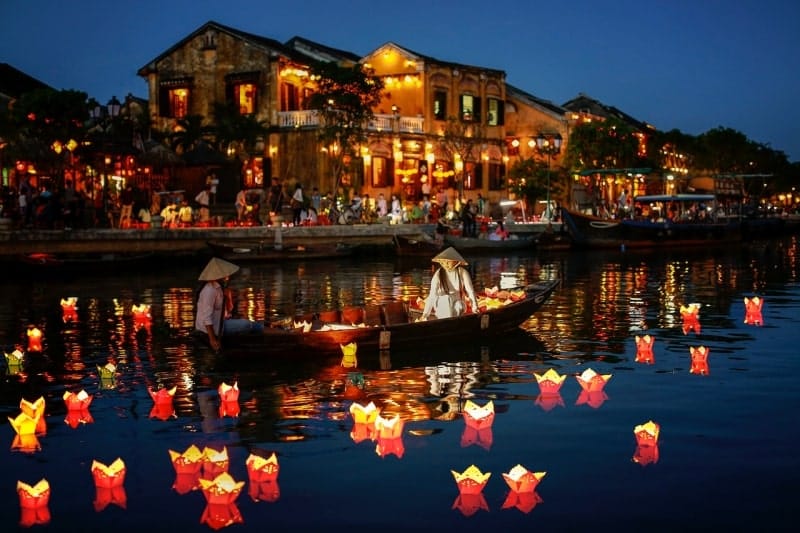
Phong Nha – Ke Bang National Park
Phong Nha-Ke Bang National Park stands as a testament to the country’s rich natural heritage and geological marvels. Renowned for its unique karst landscape, this area has been recognized by UNESCO as a World Natural Heritage site not once, but twice, highlighting its exceptional significance on both geological and ecological fronts.

One of the most striking features of Phong Nha-Ke Bang is its complex karst tectonics, which create a landscape unlike any other in Southeast Asia. Towering limestone mountains dot the horizon, adorned with lush vegetation and punctuated by an intricate network of caves and underground rivers. These natural formations have captivated scientists and adventurers alike, drawing visitors from across the globe to explore their hidden depths.
At the heart of Phong Nha-Ke Bang’s allure are its magnificent cave systems, which are among the largest and most spectacular in the world. Recognized for their immense size, intricate formations, and awe-inspiring beauty, these caves offer a glimpse into the Earth’s ancient past and provide a unique opportunity for exploration and discovery. Among the notable caves in the park are En Cave, Vom Cave, Toi Cave, and the iconic Phong Nha Cave, each offering its own distinct charm and allure.
Beyond its cave systems, Phong Nha-Ke Bang is also home to an extensive network of underground rivers, including some of the longest in the world. These rivers, such as the Chay River, Son River, and Trooc River, derive their water from a system of underground streams that emerge from the depths of the Earth to the surface in various caves throughout the park. This unique hydrological system not only sustains the park’s diverse ecosystem but also adds to its scenic beauty, with crystal-clear waters meandering through verdant valleys and rugged terrain.
Phu Quoc
Situated in the Gulf of Thailand, Phu Quoc Island is a hidden gem waiting to be discovered by travelers seeking pristine beaches, lush landscapes, and rich cultural experiences. As the first island city established in Vietnam, Phu Quoc boasts a unique blend of natural beauty and cultural heritage, making it a captivating destination for adventurers and relaxation-seekers alike.
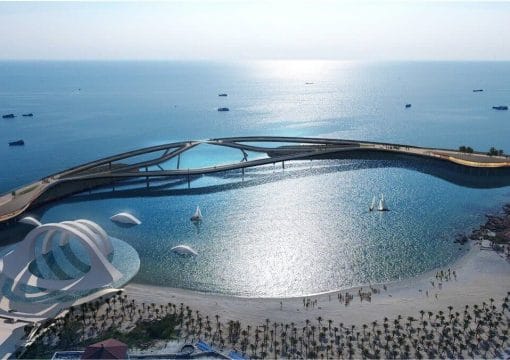
Phu Quoc Island, along with its neighboring small islands and the Tho Chu archipelago, forms the Phu Quoc City within Kien Giang province. This stunning locale was recognized by UNESCO in 2006 as a Coastal Biosphere Reserve and a world biosphere reserve, highlighting its ecological significance and natural splendor.
The northern region of Phu Quoc Island is characterized by its rich biodiversity and untouched beauty, featuring pristine forests, secluded beaches, and traditional fishing villages that offer a glimpse into the island’s authentic way of life. Away from the hustle and bustle of commercial tourism, visitors can immerse themselves in the tranquility of this idyllic paradise and connect with nature in its purest form.
One of the island’s most captivating attractions is Phu Quoc National Park, spanning over 31,400 hectares and encompassing a diverse range of ecosystems, including mountains, forests, seas, waterfalls, and streams. Home to hundreds of species of animals and plants, the national park offers a sanctuary for wildlife and a haven for outdoor enthusiasts. Visitors can embark on exhilarating hikes through lush vegetation, discovering hidden gems such as Tranh Stream, Da Ban Stream, and Da Ngon Stream along the way.
Conclusion
In summary, Vietnam stands as a testament to the diversity and beauty of scenic landscapes. From the majestic karst formations of Ha Long Bay to the lush forests of Phong Nha-Ke Bang and the pristine beaches of Phu Quoc Island, Vietnam offers a plethora of natural wonders waiting to be explored. With its rich biodiversity, cultural heritage, and captivating vistas, Vietnam continues to captivate travelers seeking unforgettable scenic experiences. Explore Vietnam’s scenic marvels and embark on a journey through unparalleled natural beauty.


Related Posts
Saigon’s “Flower Market Replica”: Where To Find Them
Ho Chi Minh City’s floral charm is not limited to its bustling wholesale markets. Imagine wandering through a place where vibrant petals, fragrant blooms, and the spirit of traditional Vietnamese markets come alive—without the overwhelming crowds. A flower market replica captures that magic, blending the beauty of fresh flowers with the charm of a curated, […]
Is it Safe to Travel to Vietnam Right Now? A Complete 2025 Guide
Vietnam has emerged as one of Southeast Asia’s most captivating destinations, drawing millions of visitors annually with its rich culture, stunning landscapes, and incredible cuisine. However, many travelers still ask: Is it safe to travel to Vietnam right now? This comprehensive guide provides you with everything you need to know about Vietnam travel safety in […]
Ho Chi Minh Cu Chi Tunnels Tour: The Ultimate Guide
The Cu Chi Tunnels stand as one of Vietnam’s most remarkable historical sites, offering visitors a profound glimpse into the ingenuity and resilience displayed during the Vietnam War. For travelers, a Ho Chi Minh Cu Chi tunnels tour represents an essential experience that combines education, adventure, and deep cultural understanding. This comprehensive guide will help […]